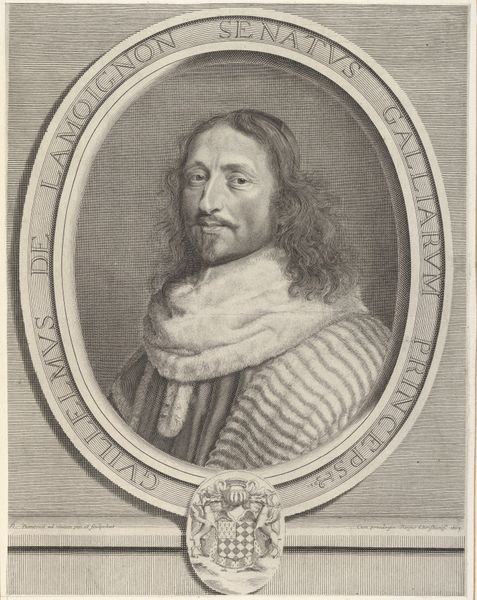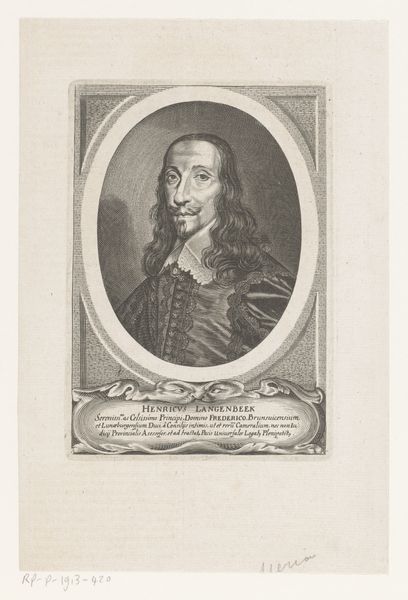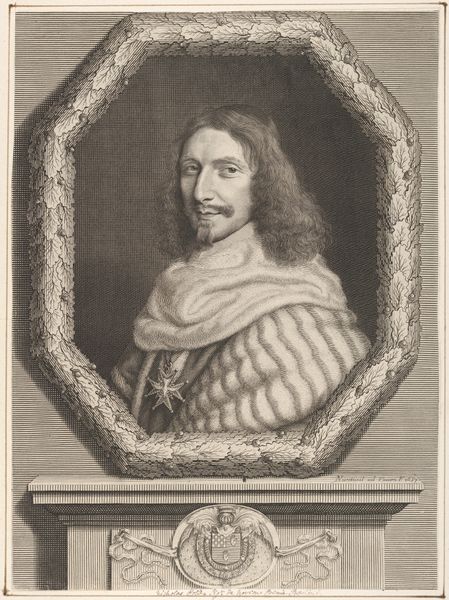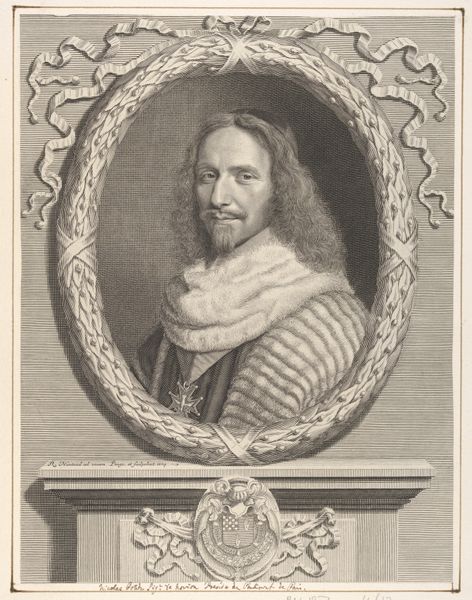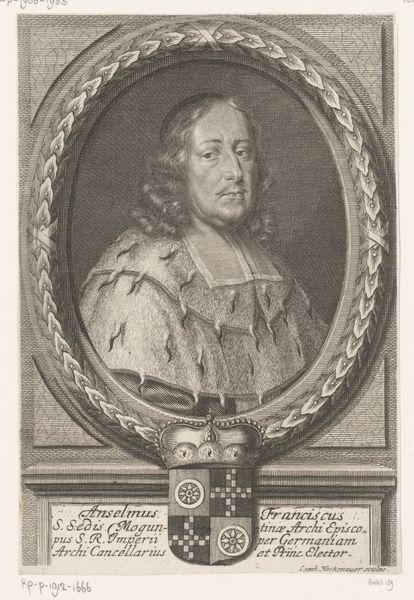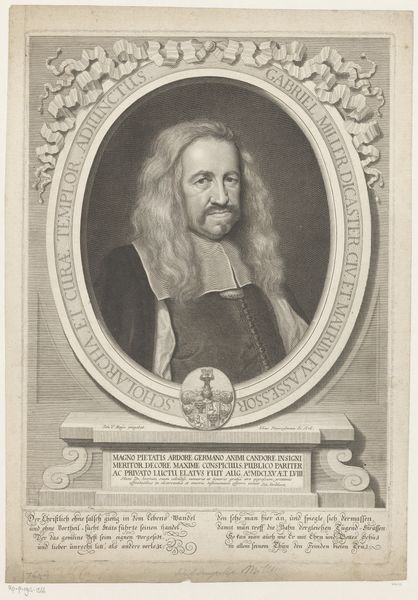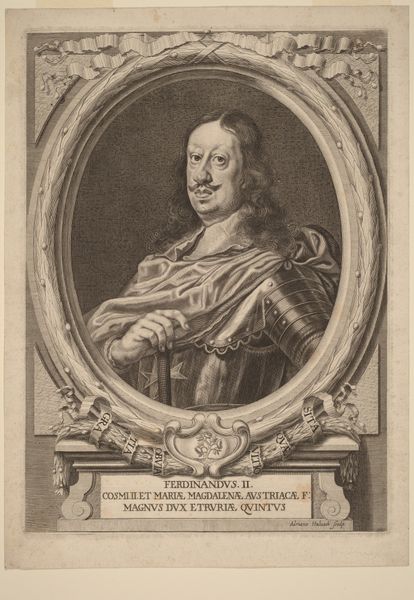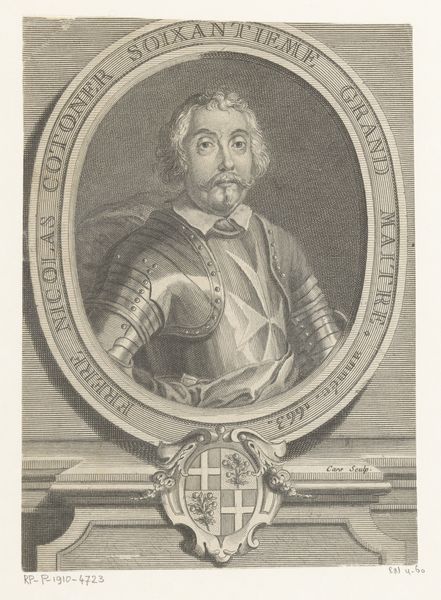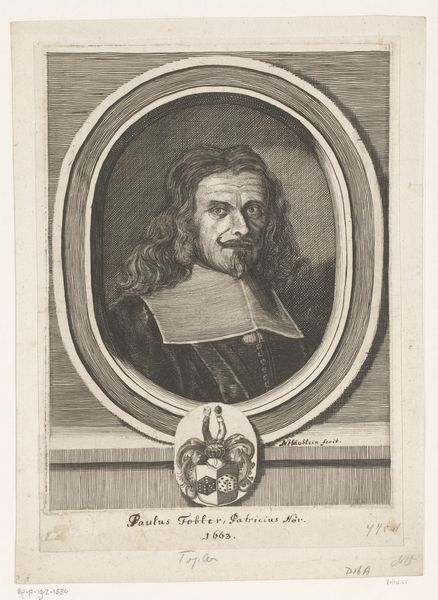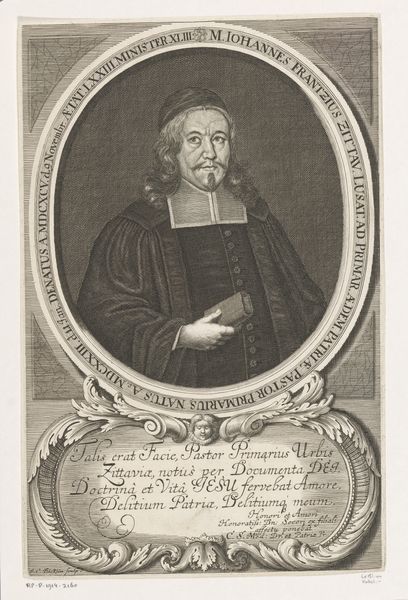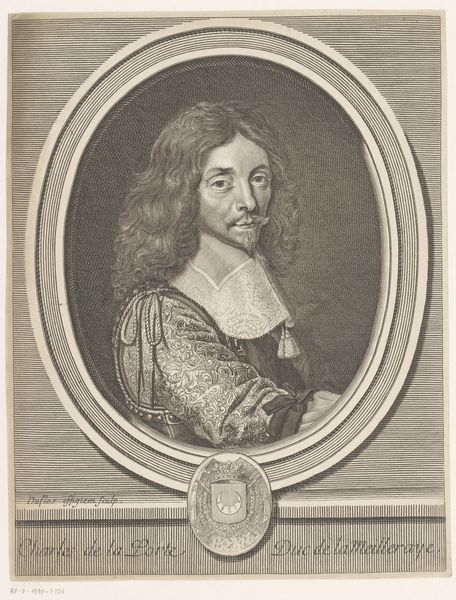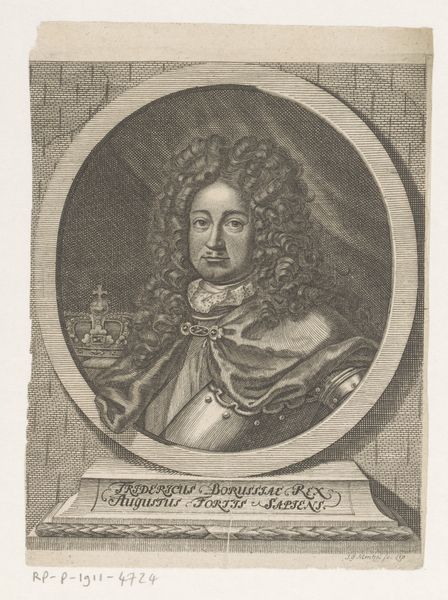
etching, engraving
#
baroque
#
etching
#
history-painting
#
engraving
Dimensions: height 255 mm, width 171 mm
Copyright: Rijks Museum: Open Domain
Editor: Here we have "Portret van Philip II Caetani," made sometime between 1667 and 1708 by Jean-Baptiste Nolin. It looks like an etching or engraving. There's so much detail in the rendering of texture—especially his hair and lace collar! What's your read on this portrait? Curator: Looking at this print, I am drawn to the meticulous process of its creation. The lines, etched or engraved, signify labor—both the artist’s and, metaphorically, Caetani’s societal labor implied through his portrait. What does the mass production of prints, in comparison to the bespoke nature of painting, tell us about 17th-century access and consumption of art? Editor: That’s a great point about production! I hadn't thought about that contrast. So, would this have been for a more general audience then? To broadcast his importance through reproductions, almost like social media today? Curator: Precisely. And consider the materials: the paper, the ink, the copperplate. Each element chosen for its cost and capacity for reproduction. How does Nolin negotiate this balance between artistic skill, which elevates the status of Caetani and technical repeatability, a democratizing force that potentially undermines it? Editor: I guess it shows how the value of a portrait, and perhaps the sitter’s value too, changes as the medium changes. Does the print diminish Caetani, or simply reflect a shift in social power dynamics? Curator: Or perhaps even augment it! By thinking about its function – its role in circulating ideas and images – we can see this print less as a static representation and more as an active agent in the political and economic landscape of its time. Editor: That’s a new perspective. Thank you for opening my eyes to consider production and labor within this artwork! Curator: And thank you for yours. I’ll certainly be examining materiality in this Baroque print.
Comments
No comments
Be the first to comment and join the conversation on the ultimate creative platform.

